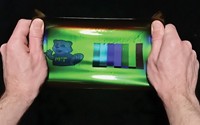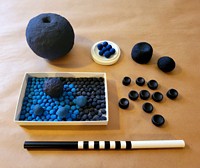Advertisement
Grab your lab coat. Let's get started
Welcome!
Welcome!
Create an account below to get 6 C&EN articles per month, receive newsletters and more - all free.
It seems this is your first time logging in online. Please enter the following information to continue.
As an ACS member you automatically get access to this site. All we need is few more details to create your reading experience.
Not you? Sign in with a different account.
Not you? Sign in with a different account.
ERROR 1
ERROR 1
ERROR 2
ERROR 2
ERROR 2
ERROR 2
ERROR 2
Password and Confirm password must match.
If you have an ACS member number, please enter it here so we can link this account to your membership. (optional)
ERROR 2
ACS values your privacy. By submitting your information, you are gaining access to C&EN and subscribing to our weekly newsletter. We use the information you provide to make your reading experience better, and we will never sell your data to third party members.
People
Polaroid Designated As Chemical Landmark
Instant photography transformed the way photographs were developed
by Linda Wang
October 19, 2015
| A version of this story appeared in
Volume 93, Issue 41

These days, thanks to digital technology, photos appear instantaneously. But it wasn’t long ago that that kind of instant gratification in photography came only from using a Polaroid camera. Since the introduction of Polaroid in 1947, the iconic white frame has captured millions of memories, and it forever changed the way photographs were developed.
On Aug. 13, the American Chemical Society designated the invention of instant photography by Edwin H. Land of Polaroid Corp. as a National Historic Chemical Landmark. The commemorative plaque was installed at the former Polaroid laboratory in Cambridge, Mass., which Land and his Harvard University colleague George W. Wheelwright III founded in 1932 as Land-Wheelwright Laboratories. The ceremony took place at the MIT Museum, which sponsored the event, along with ACS and the ACS Northeastern Section.
“Each of us here today can remember when we first encountered this amazing product,” said ACS President Diane Grob Schmidt during her remarks. “For some, it was the click of a button, 60 ticks of a watch, and the peeling apart of two plastic sheets to reveal a developed image. For the younger members of the audience, it was shaking the white rectangle of film and watching the picture come into view.

“But for all of us, the act of holding a developed photograph in our hands moments after taking the photo was astonishing and gratifying, in much the same way as the introduction of e-mail or smartphones,” Schmidt said.
Land was inspired to develop instant photography when, in 1943, during a vacation in Sante Fe, N.M., he took a photo of his three-year-old daughter, Jennifer, who asked her father why she could not see the photo right away. Land was immediately taken by this idea and began working on a solution.
He made the first public demonstration of instant photography on Feb. 21, 1947, during a meeting of the Optical Society of America in New York City. In the subsequent decades, Polaroid revolutionized traditional photography by compressing the numerous darkroom processes into an integrated film unit and producing a final photograph in seconds after the click of a camera shutter.
According to Land’s 1974 description of the process: “When the film is ejected, potassium hydroxide in a few drops of water is spread in a layer twenty-six ten thousandths of an inch thick and ‘all hell breaks loose,’ but in a much more orderly way than that phrase implies. For several minutes, chemical reactions occur rapidly one step after another in that thin sandwich, and then this progression slowly stops. There is peace again, and the picture is complete.”
The technology would not have been possible without a number of chemical breakthroughs, including the invention of new dyes, negative films, positive sheets, and developers, and then orchestrating the delicate series of chemical reactions involved in developing a photograph.
The first Polaroid camera, called the Model 95, and its associated sepia film went on sale in 1948 at a department store in Boston, and it sold out in minutes. A black-and-white version of the film followed in 1950. Polaroid’s color film debuted in 1963, and the iconic SX-70 camera and its film began selling in 1972.
In addition to Polaroid, Land produced other transformative technologies, such as the sheet polarizer, and he developed antiglare goggles and other optical devices for soldiers and pilots during World War II. He earned 535 patents in the course of conducting and directing research at Polaroid.
Across the U.S., the National Historic Chemical Landmarks program has awarded landmark status to more than 75 places, discoveries, and achievements in the history of chemical science and technology.
ACS launched the chemical landmarks program to enhance public appreciation for the contributions of the chemical sciences to modern life in the U.S. and to encourage a sense of pride in the practitioners of those sciences. Prospective landmarks can be nominated by ACS local sections, divisions, or committees.
For more information about the ACS chemical landmarks program, visit www.acs.org/landmarks.




Join the conversation
Contact the reporter
Submit a Letter to the Editor for publication
Engage with us on Twitter